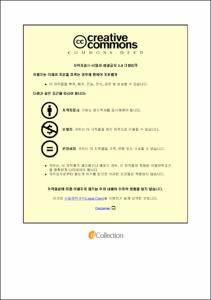700℃에서의 Type 316L 스테인리스강의 저사이클 피로 거동
- Alternative Title
- Low cycle fatigue behavior of Type 316L stainless steel at 700℃
- Abstract
- Thermal energy storage system is one of the energy storage systems that use thermal method. Large-scale thermal energy storage system performance test facility being developed by KAERI is designed to be operated in high-temperature environment of 700℃. Considering the heat resistance characteristic, economy and ease of acquisition, it is expected that Type 316L austenitic stainless steel will be used as structural material for AHX, heat storage tank and hot leg. The design of a thermal energy storage system operating at high temperature in the creep region must take into account low cycle fatigue and creep-fatigue damage due to cyclic loads under heat ip, cool down and transient loads. However, in previous studies, it was investigated that there was no study on low cycle fatigue behavior at 700℃, which is the design temperature of a large-scale thermal energy storage system performance test facility being developed at the KAERI. Therefore, in this study, an experimental studies were conducted to determine fatigue strengths and low cycle fatigue behavior of Type 316L stainless steel at 700℃.
Fully reversed strain controlled low cycle fatigue tests were conducted with total strain ranges of 0.4%, 0.6%, 0.8%, 1.0% and 1.2%, under a constant strain rate of 10^-3/s at 700℃. As the total strain range increased, the fatigue life of KAERI plate and TIG plate decreased. The cyclic stress response behavior of both the KAERI plate and TIG plate in all total strain ranges showed initial cyclic hardening behavior, followed by a saturation area for a certain period of time and then failure after cyclic softening. Through the hysteresis loop, a non-Masing behavior in which the steps of the tensile load do not match was observed. The fatigue life of the KAERI plate and TIG plate of Type 316L stainless steel predicted by the Coffin-Manson-Basquin model and strain energy density method was found to be in good agreement with the experimental data. In the prediction of fatigue life, the strain energy density method was shown to be reliable for less than 10^4, and the Coffin-Manson-Basquin model was reliable for more than 10^4.
- Issued Date
- 2022
- Awarded Date
- 2022. 8
- Type
- Dissertation
- Keyword
- 저사이클피로 Type316L 스테인리스강
- Publisher
- 부경대학교
- Alternative Author(s)
- Do-Hyun Ha
- Affiliation
- 부경대학교 대학원
- Department
- 대학원 기계공학부기계설계학전공
- Advisor
- 김선진
- Table Of Contents
- 1. 서론 1
2. 이론적 배경 5
2.1 저사이클 피로(Low Cycle Fatigue, LCF) 5
2.2 응력-변형률 관계 8
2.2.1 단순 응력-변형률 8
2.2.2 반복 응력-변형률 8
2.2.3 반복하중 하에서 재료의 거동 11
2.3 저사이클 피로수명 평가 13
2.3.1 Coffin-Manson-Basquin(CMB) 모델 13
2.3.2 변형률에너지밀도 16
3. 실험방법 및 절차 20
3.1 재료 및 시편 20
3.1.1 재료 20
3.1.2 저사이클 피로 실험 시편 22
3.2 실험 장비 및 방법 23
3.2.1 저사이클 피로 실험 장비 23
3.2.2 실험 방법 및 조건 25
4. 실험결과 및 고찰 27
4.1 저사이클 피로수명 27
4.2 저사이클 피로 거동 30
4.2.1 반복응력반응 30
4.2.2 히스테리시스 루프 34
4.2.3 반복 응력-변형률 선도 40
4.3 저사이클 피로수명 평가 43
4.3.1 CMB model 43
4.3.2 변형률에너지법 47
4.4 피로 설계 곡선 51
5. 결론 52
참고문헌 54
감사의 글 61
- Degree
- Master
- Appears in Collections:
- 대학원 > 기계공학부-기계설계학전공
- Files in This Item:
-
-
Download
 700℃에서의 Type 316L 스테인리스강의 저사이클 피로 거동.pdf
기타 데이터 / 8.21 MB / Adobe PDF
700℃에서의 Type 316L 스테인리스강의 저사이클 피로 거동.pdf
기타 데이터 / 8.21 MB / Adobe PDF
-
Items in Repository are protected by copyright, with all rights reserved, unless otherwise indicated.